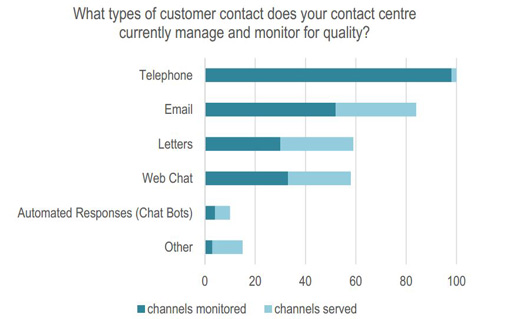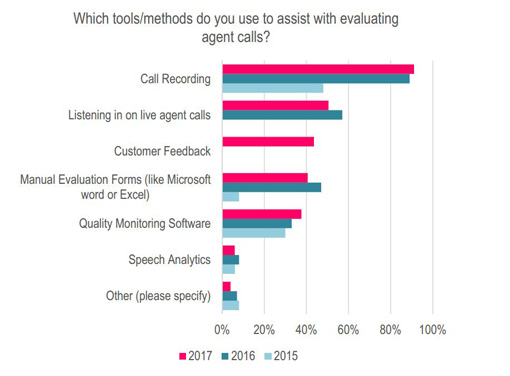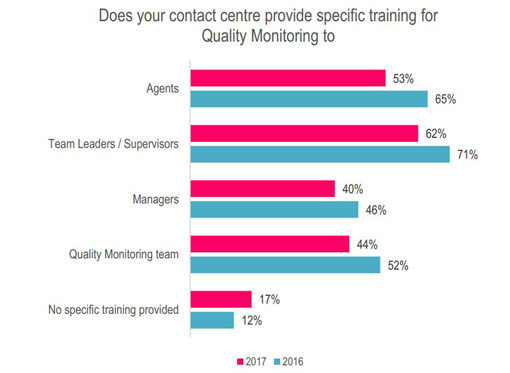This year, we have teamed up once again with The Forum to find out if and how contact centres in the UK have improved in streamlining their quality monitoring.
With the help of our expert ‘Quality Management and Training consultant’ – Brent Bischoff, we’ve handpicked a selection of some of the most interesting results drawn from our annual survey – ‘The State of Quality Monitoring – 2017’.

The most surprising result from this graph is that contact centres are failing to evaluate and monitor non-voice customer touchpoints, with fewer than 50% evaluating webmail and webchat, both pivotal channels in today’s customer journeys. Missing out on evaluating these channels will prove detrimental to the contact centres operation.

Although the figure has slightly decreased from last year, contact centres are still using manual evaluation forms (like Microsoft or Excel) for their quality monitoring (QM) process instead of utilising the tools and technologies available. For example, only 6% are using speech analytics and less than 40% are using actual QM software. Although there are technologies out there to help embed the process into the organisation, it seems contact centres still perceive QM as a cost centre to the business and are reluctant to invest in streamlining the process.

Only 53% of agents and 44% of the QM team are being trained in quality monitoring. What is important to remember here is that QM and the processes behind it are all skills that need to be learnt. Without investing time and effort into developing the people who will be delivering your QM programme, it will be a struggle to improve service level as well as customer satisfaction.
Author: Guest Author
Published On: 21st Aug 2017 - Last modified: 14th Jun 2024
Read more about - Archived Content, Brent Bischoff, Business Systems







